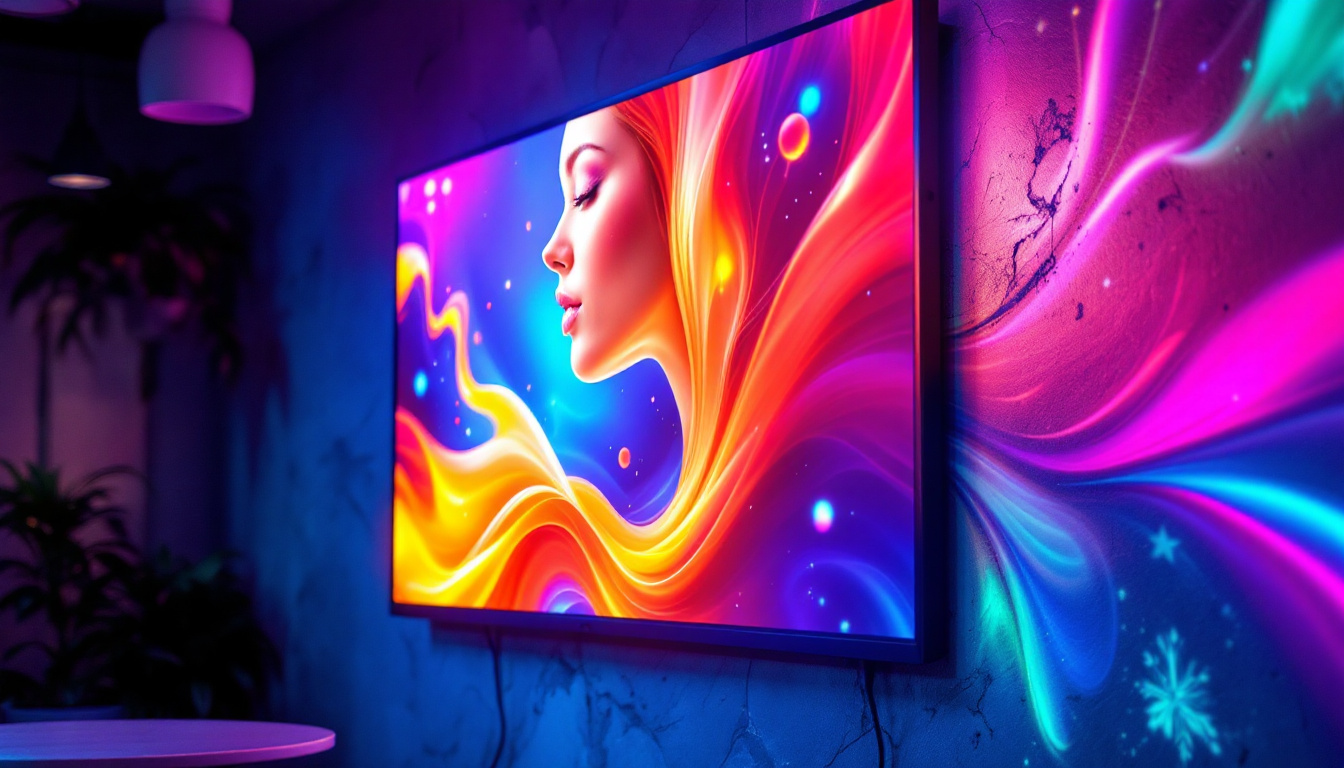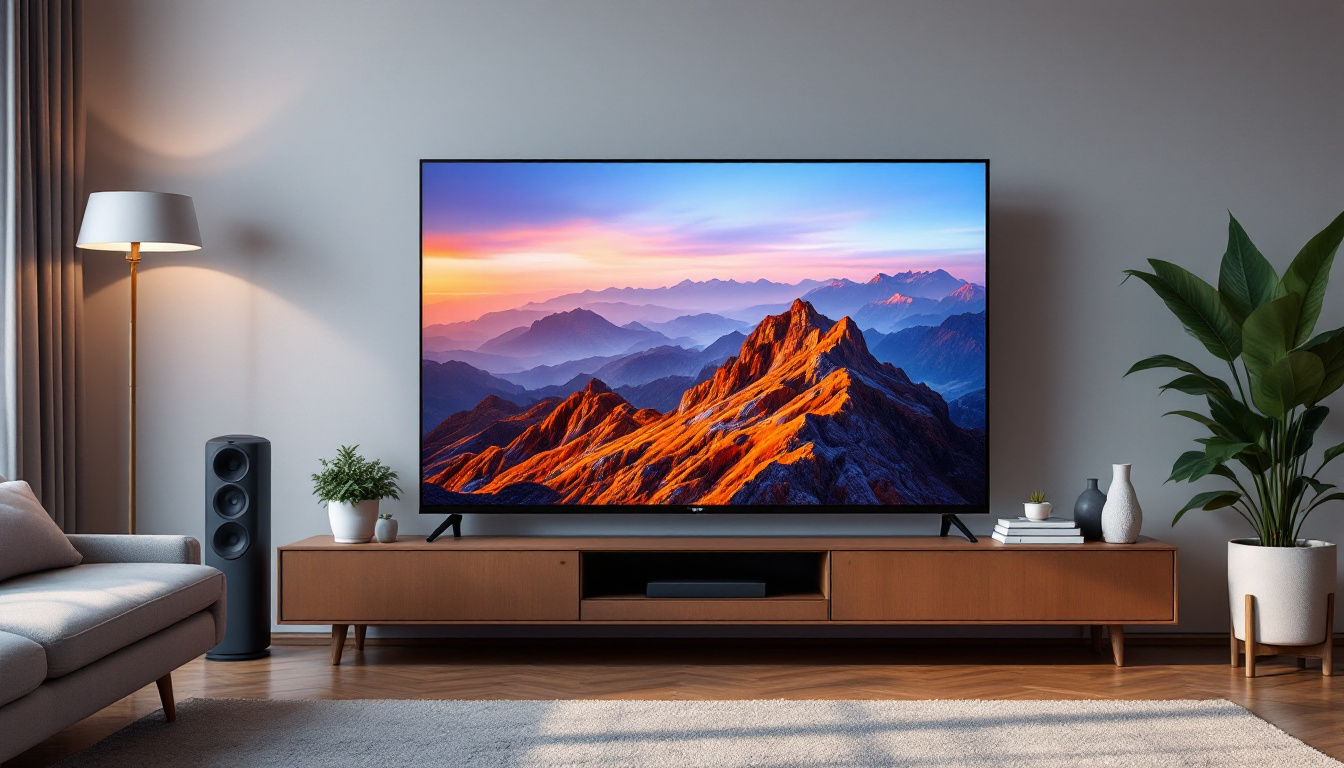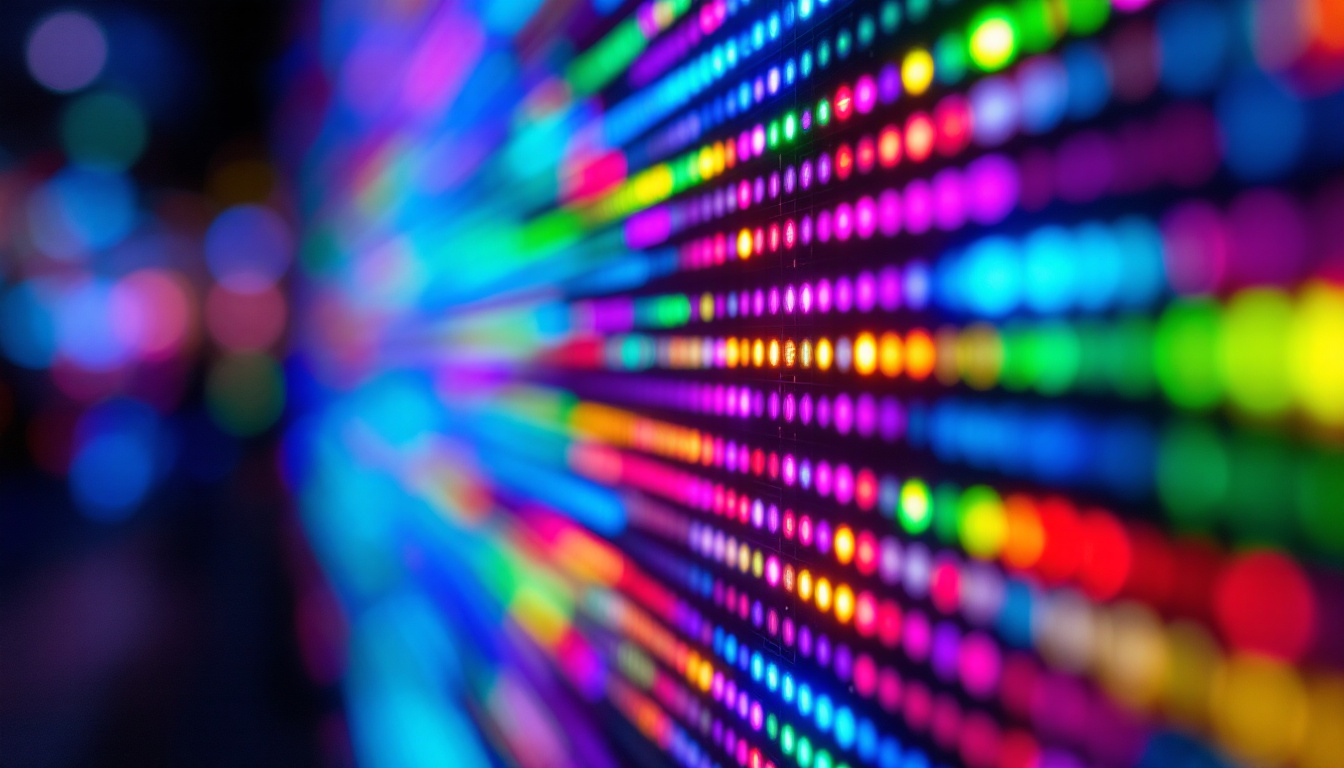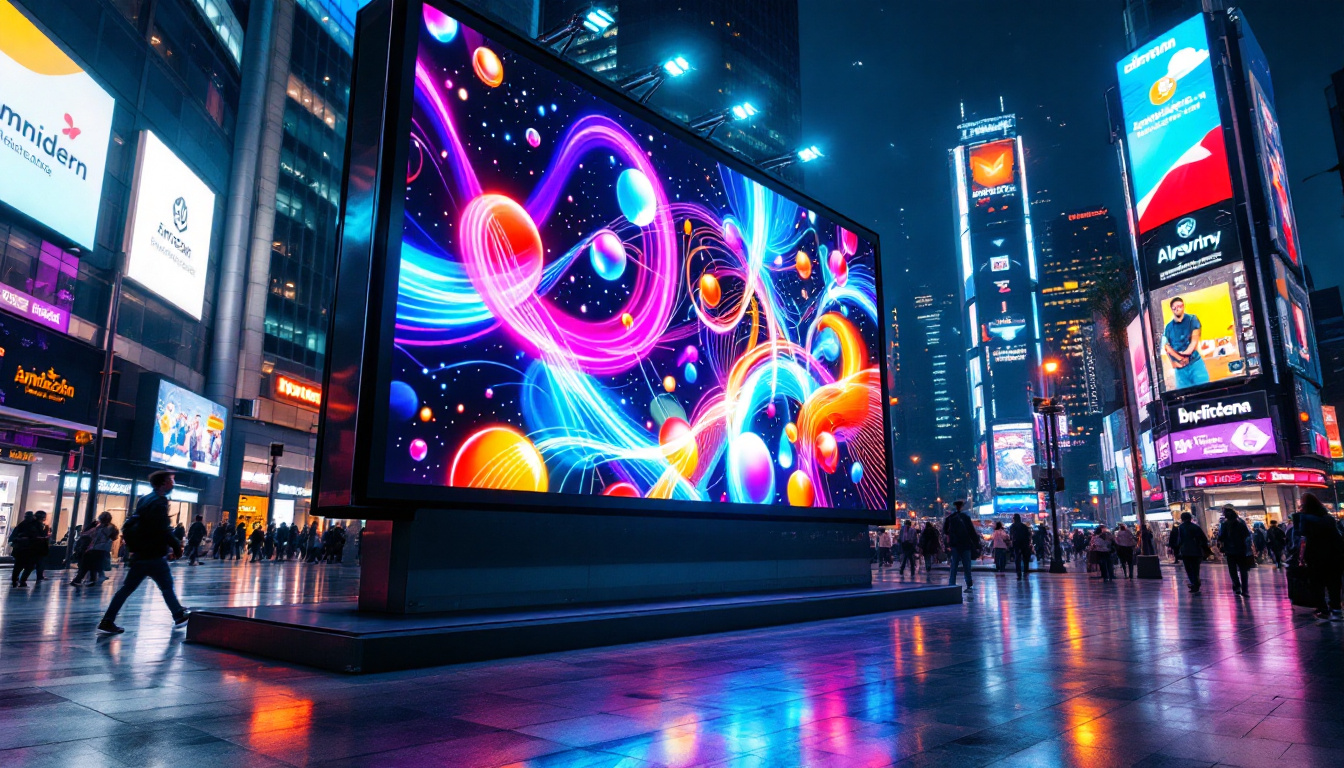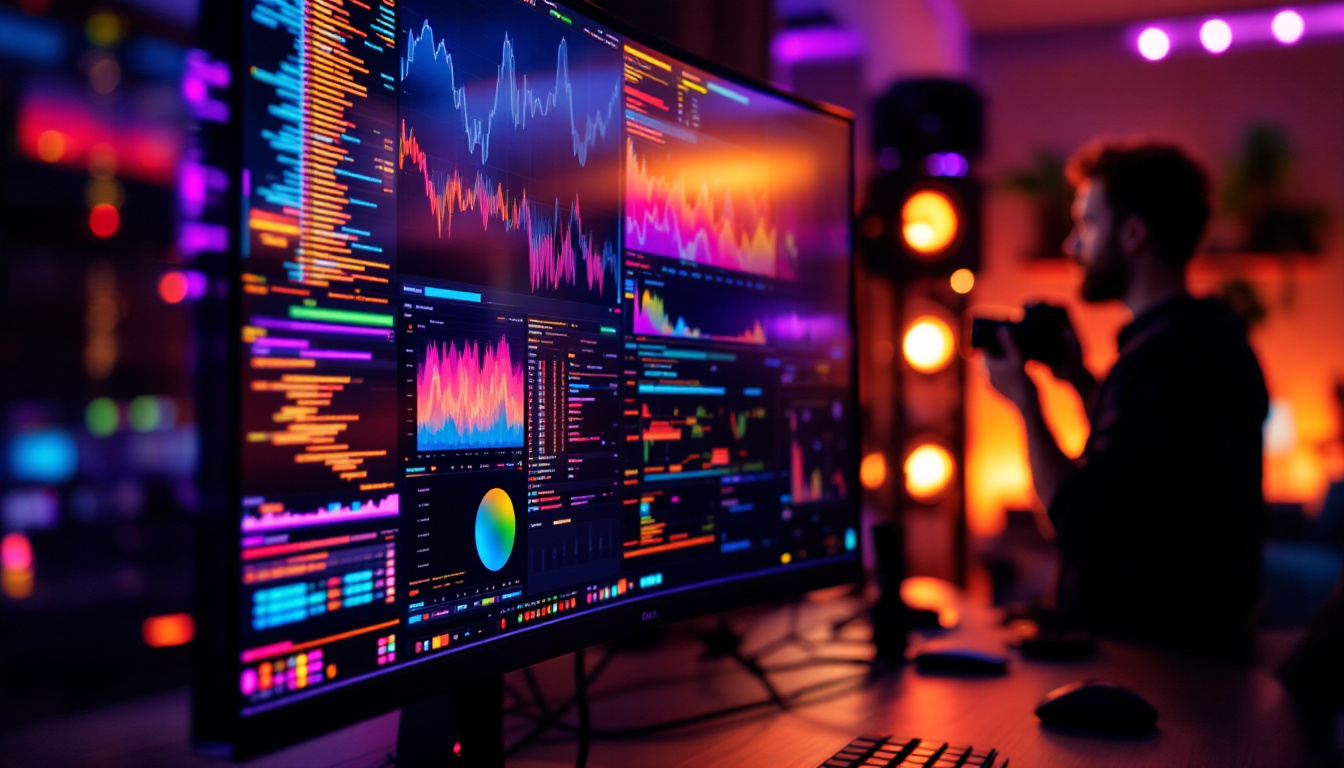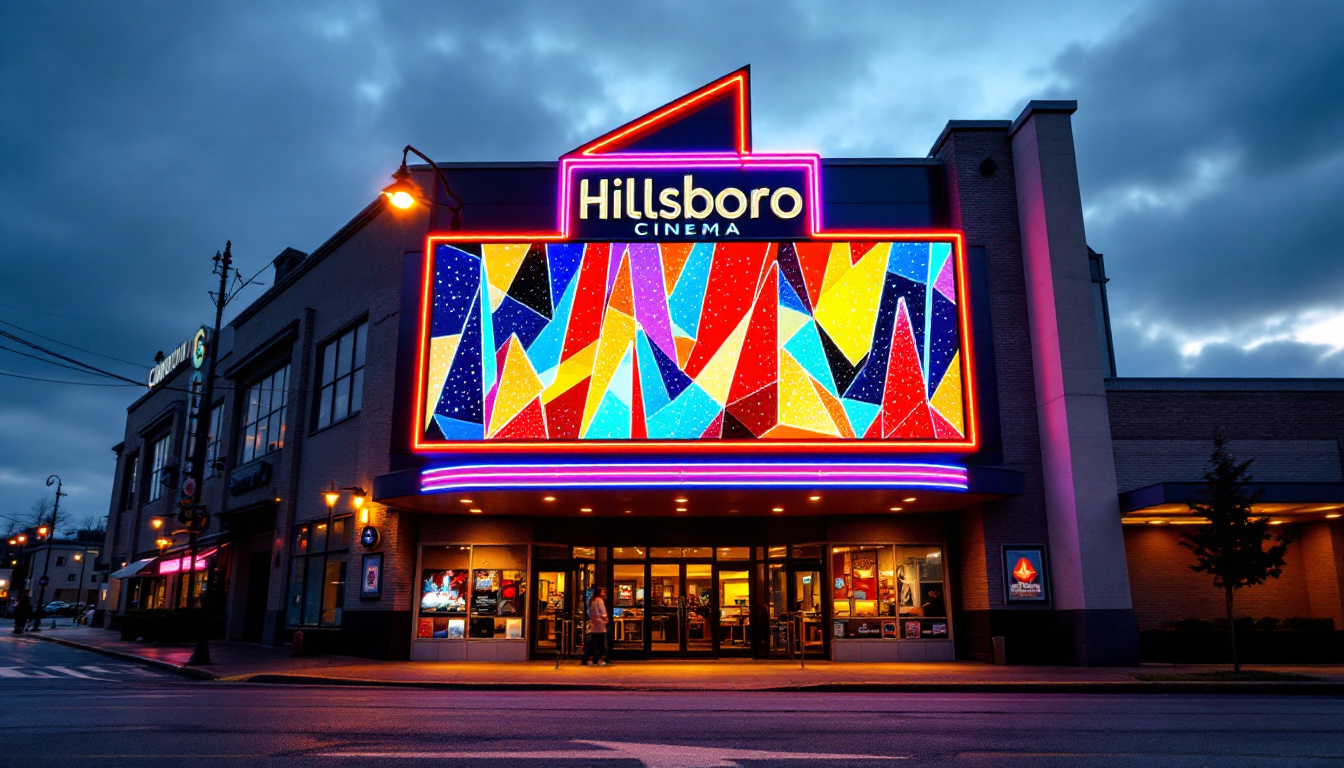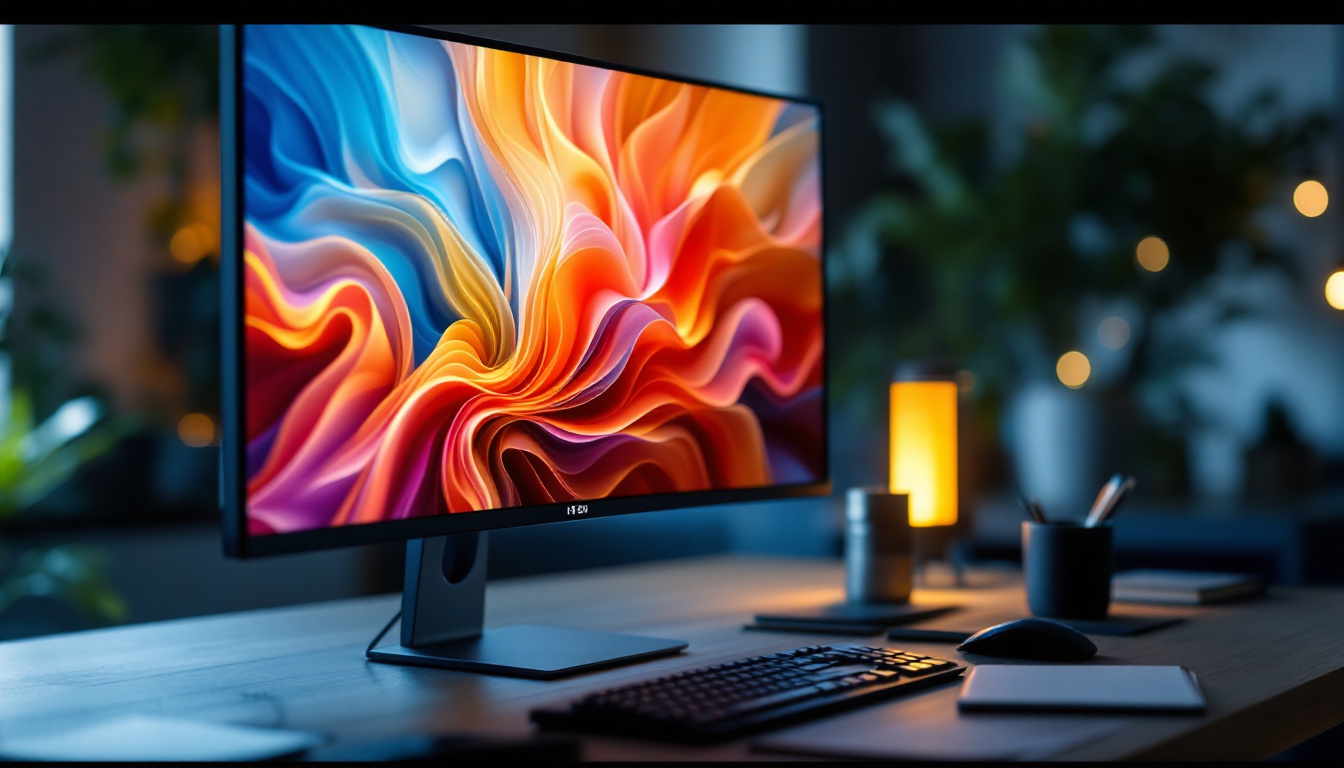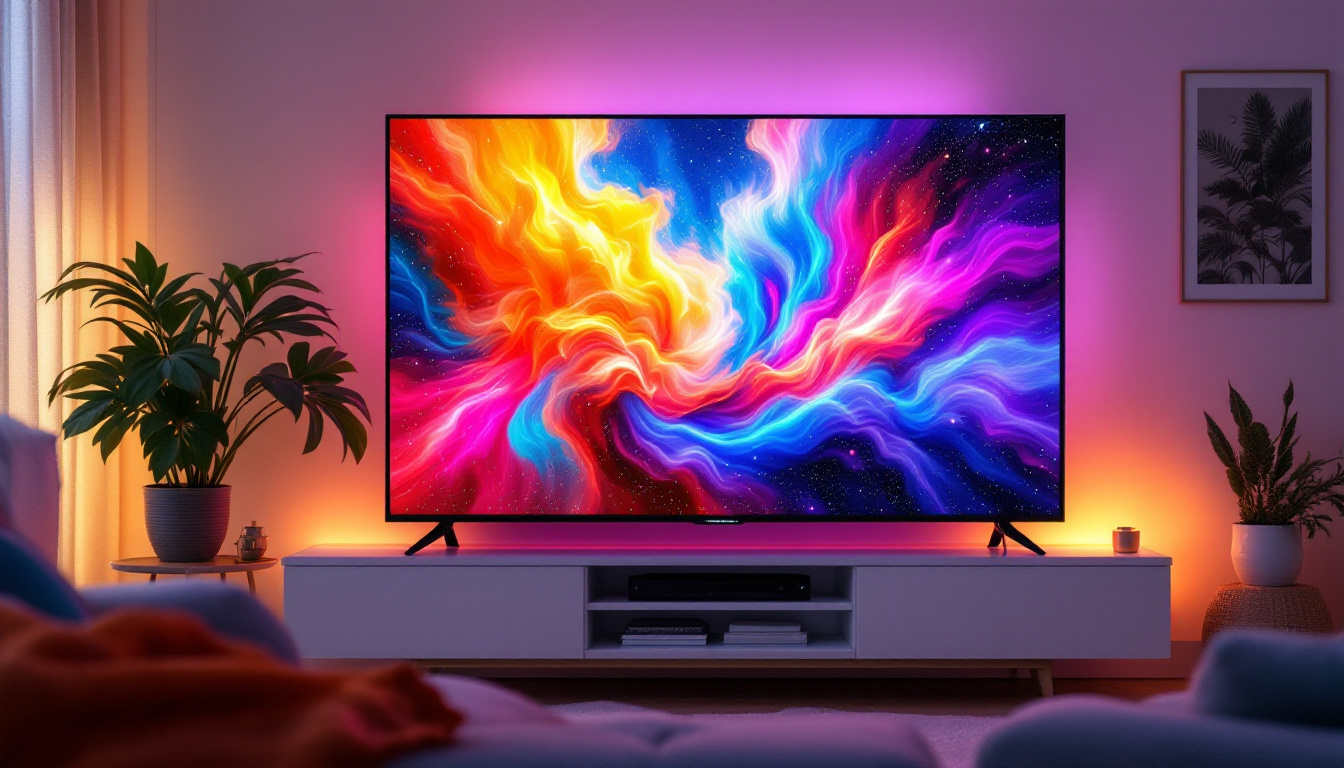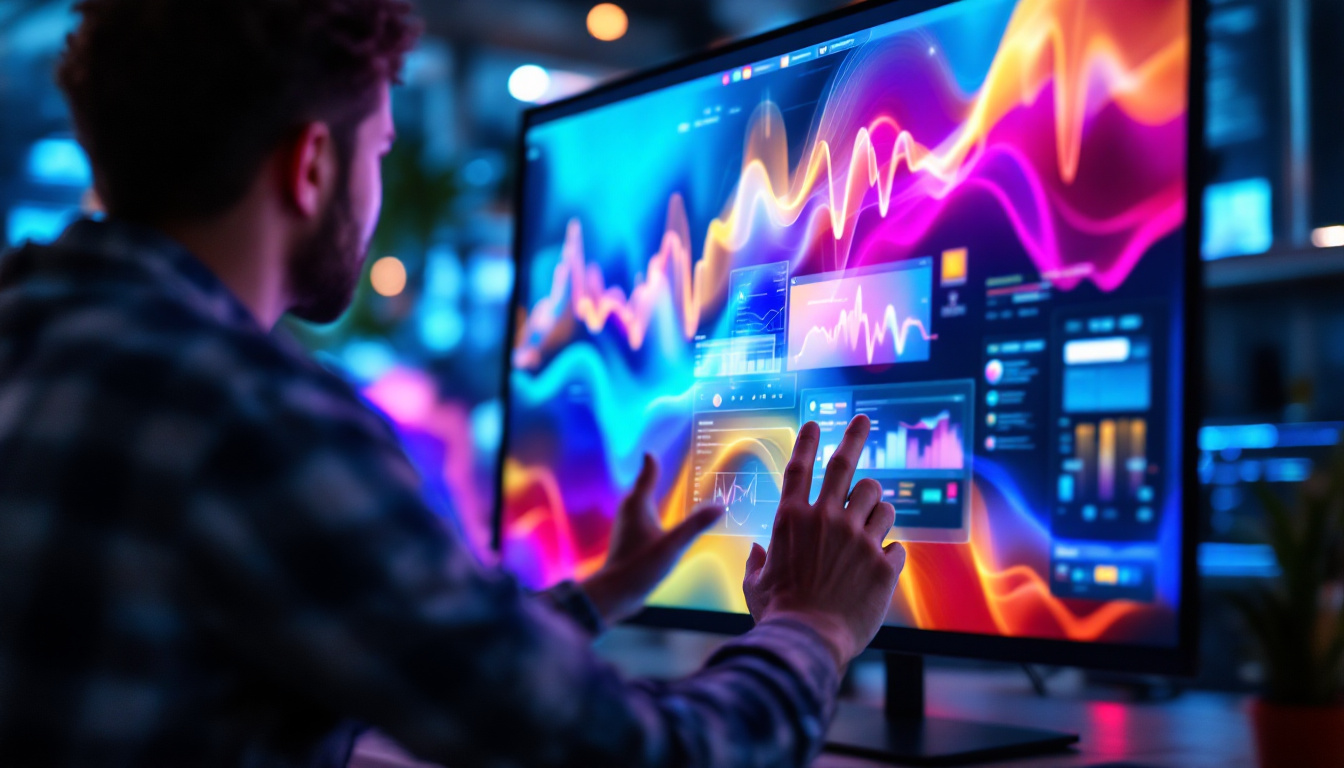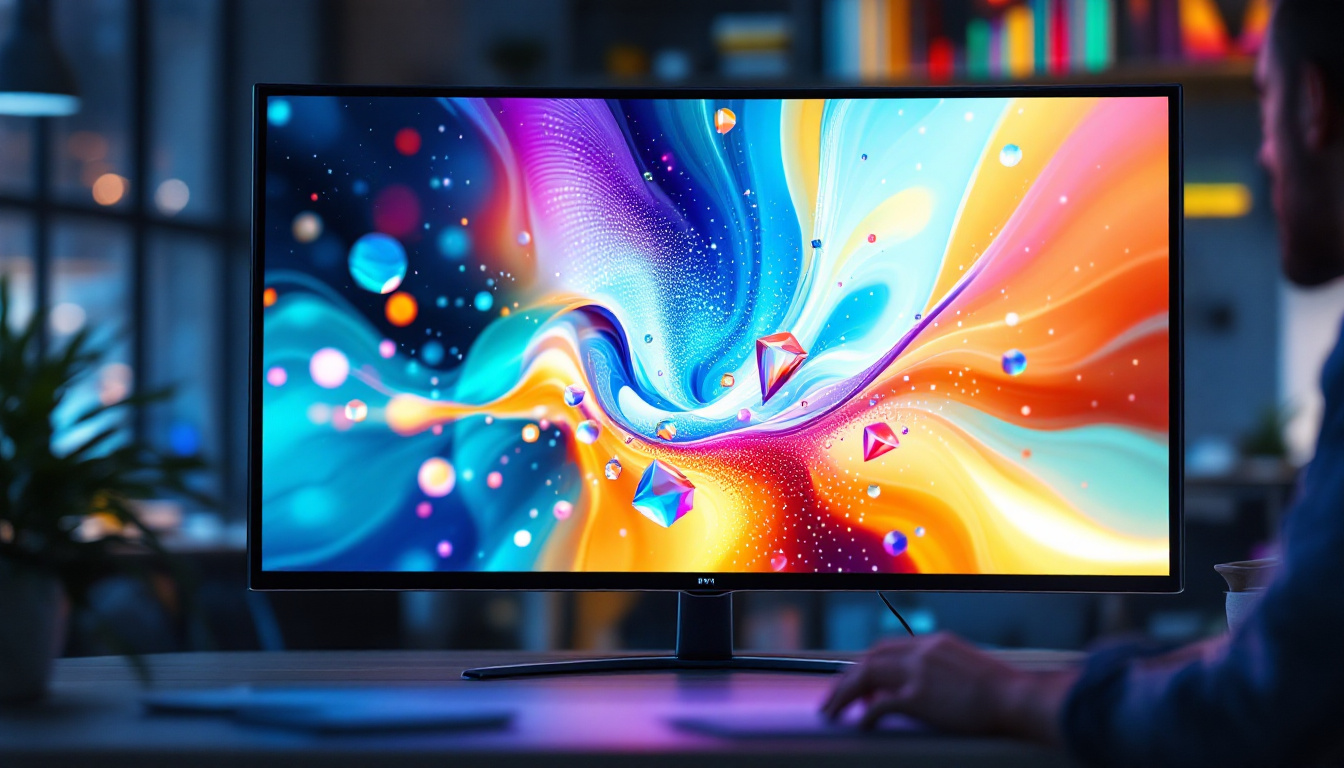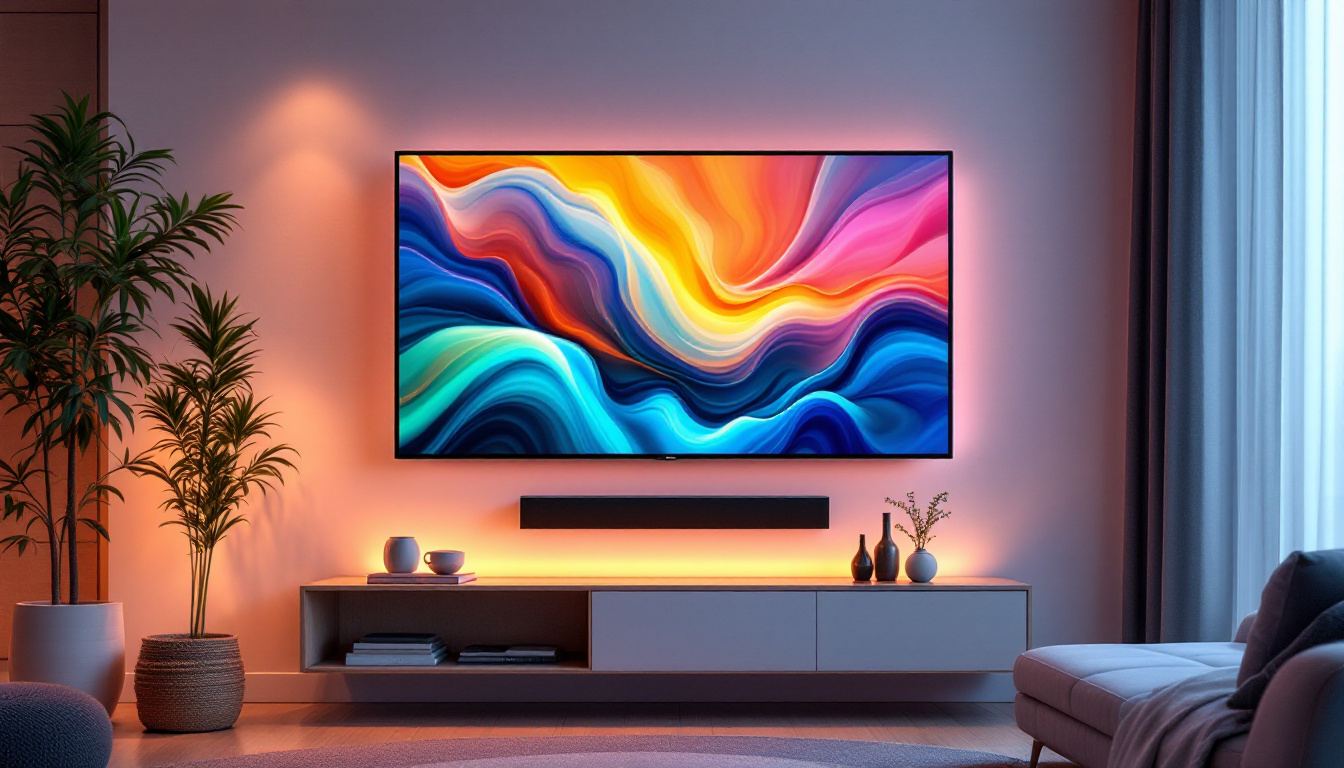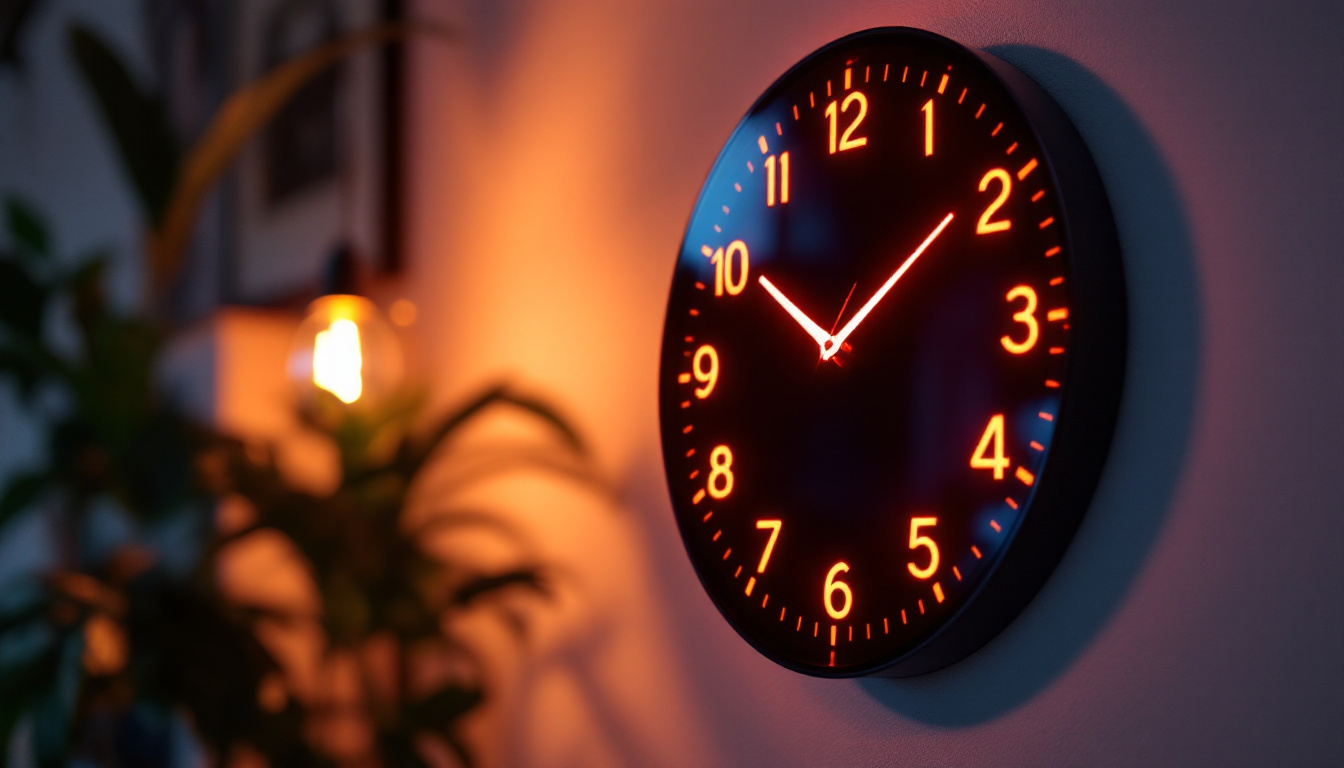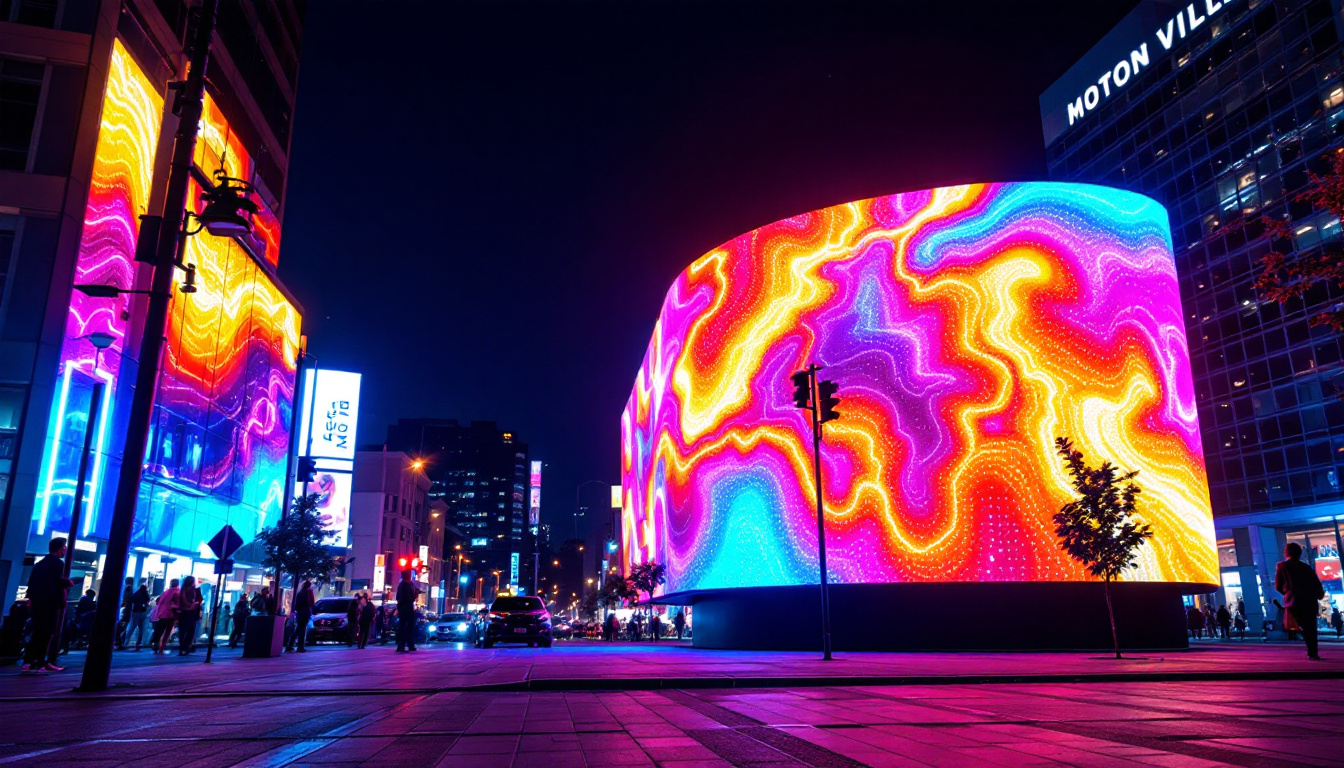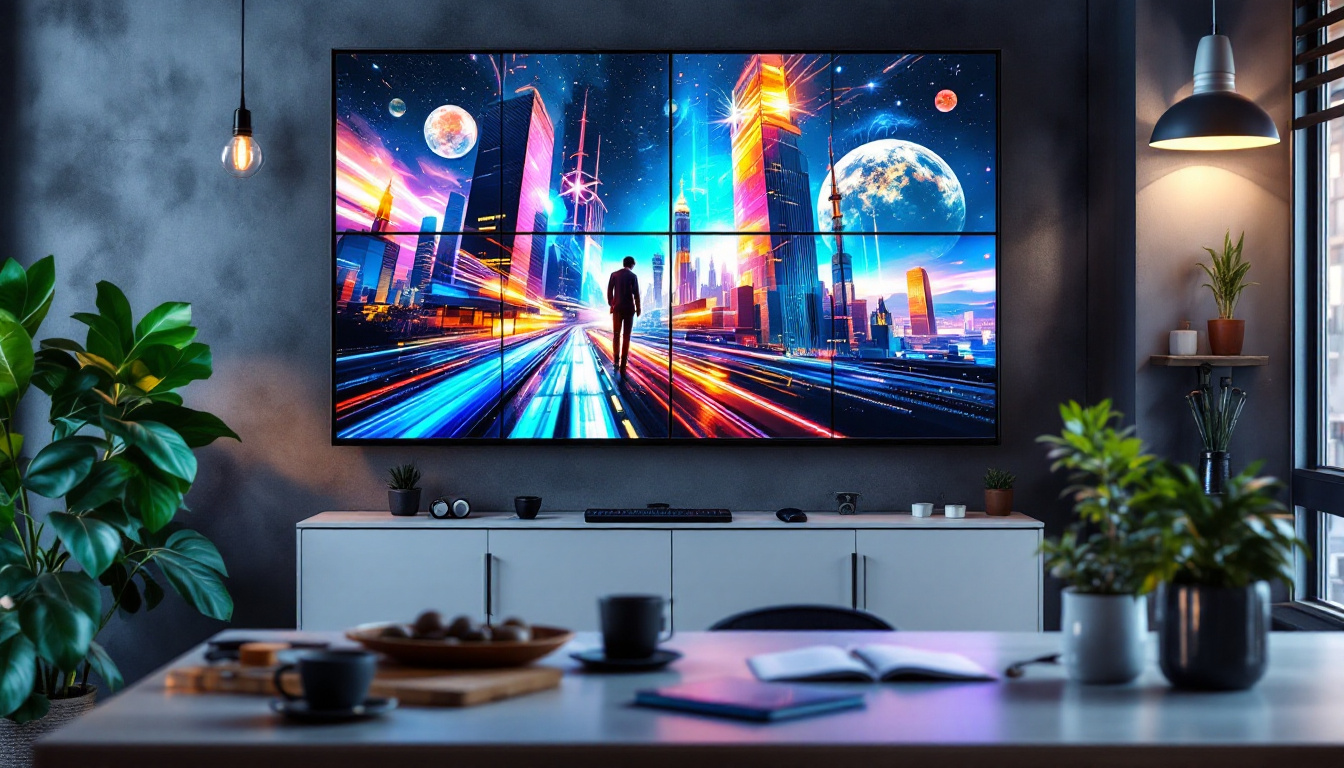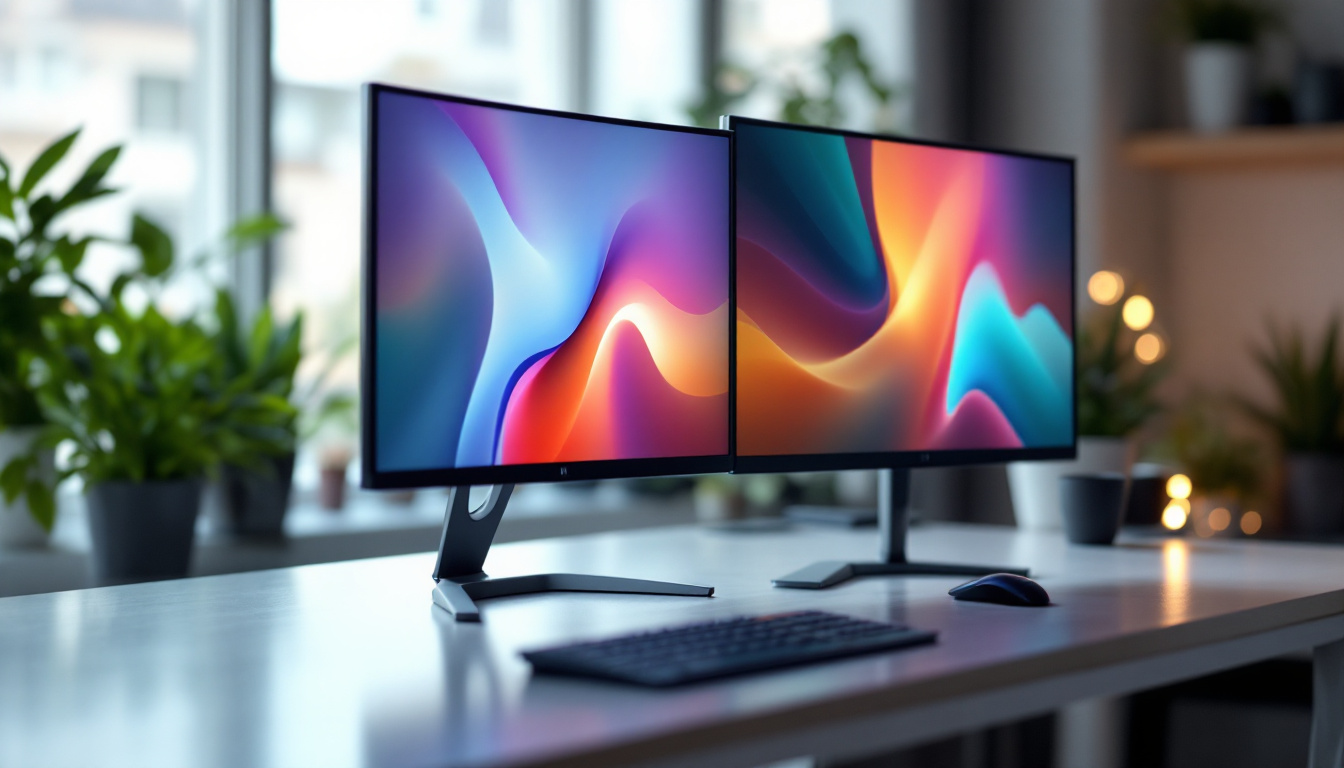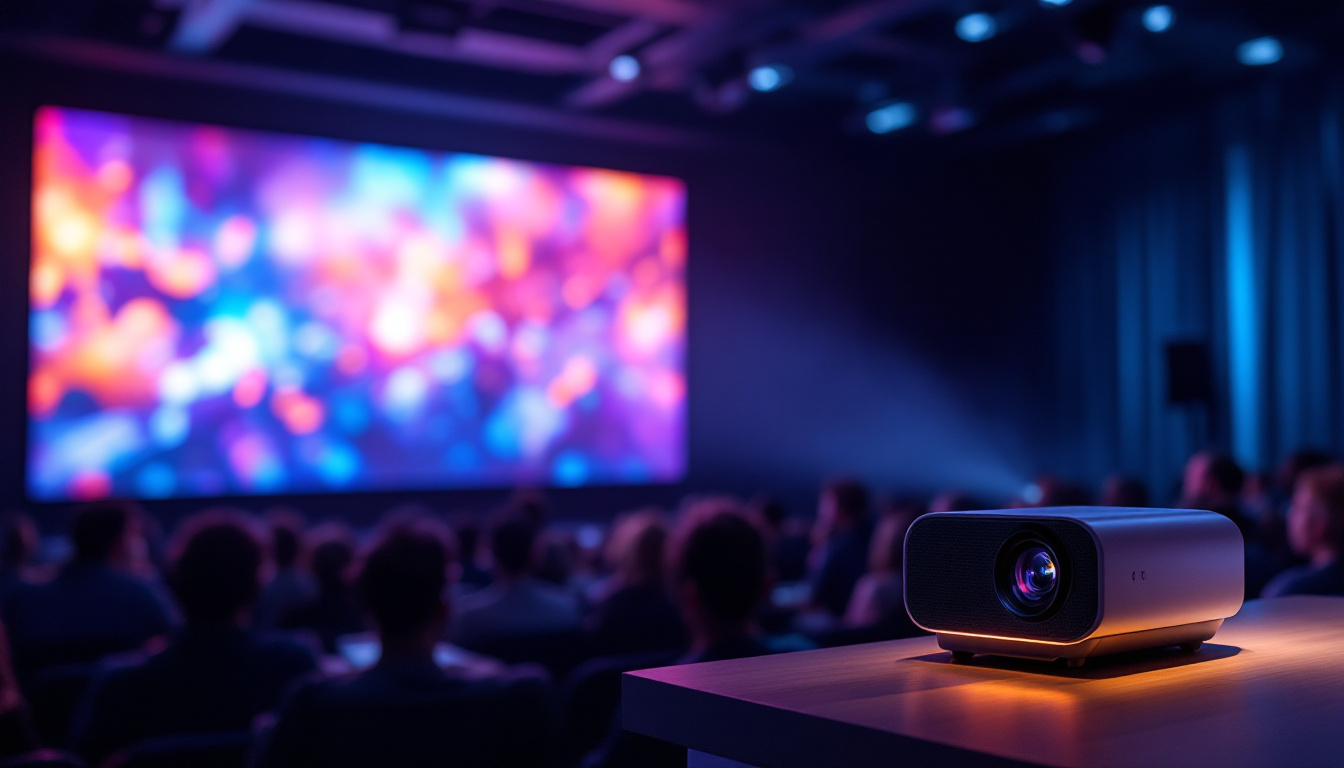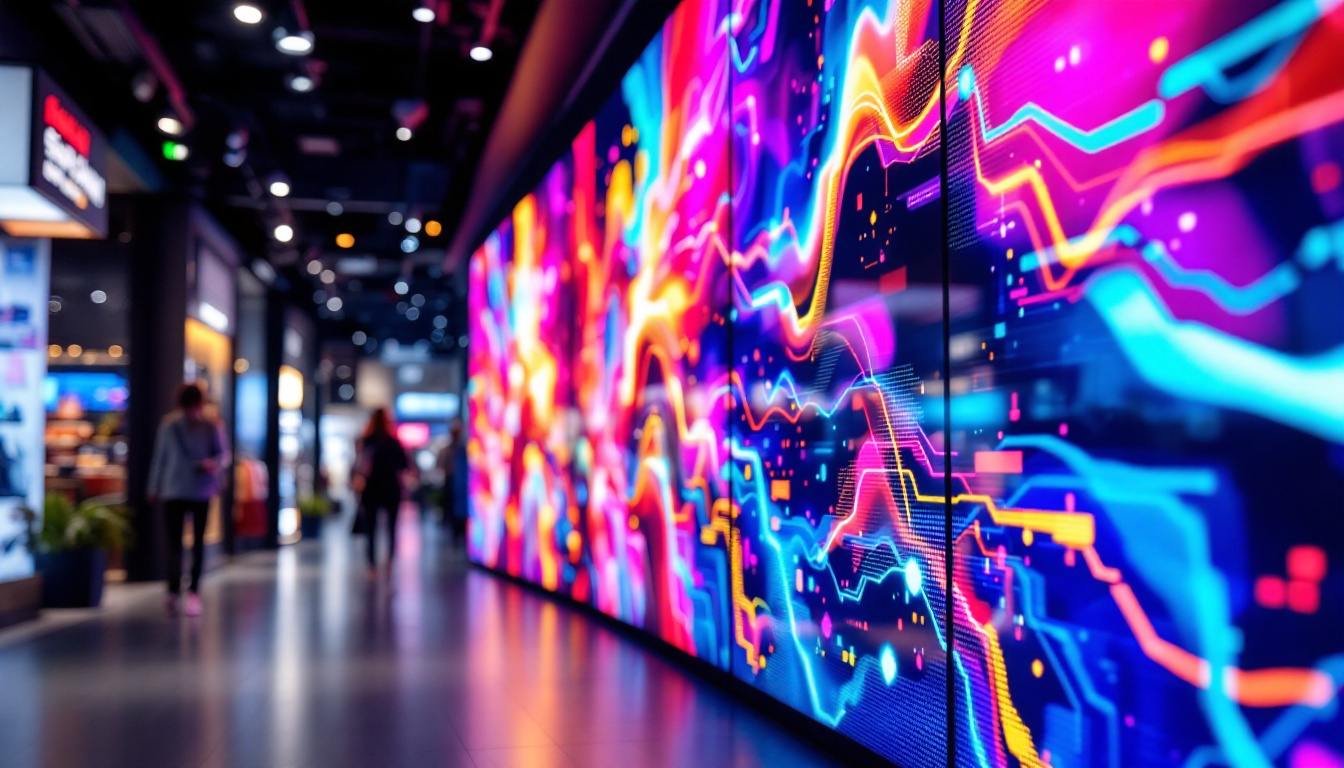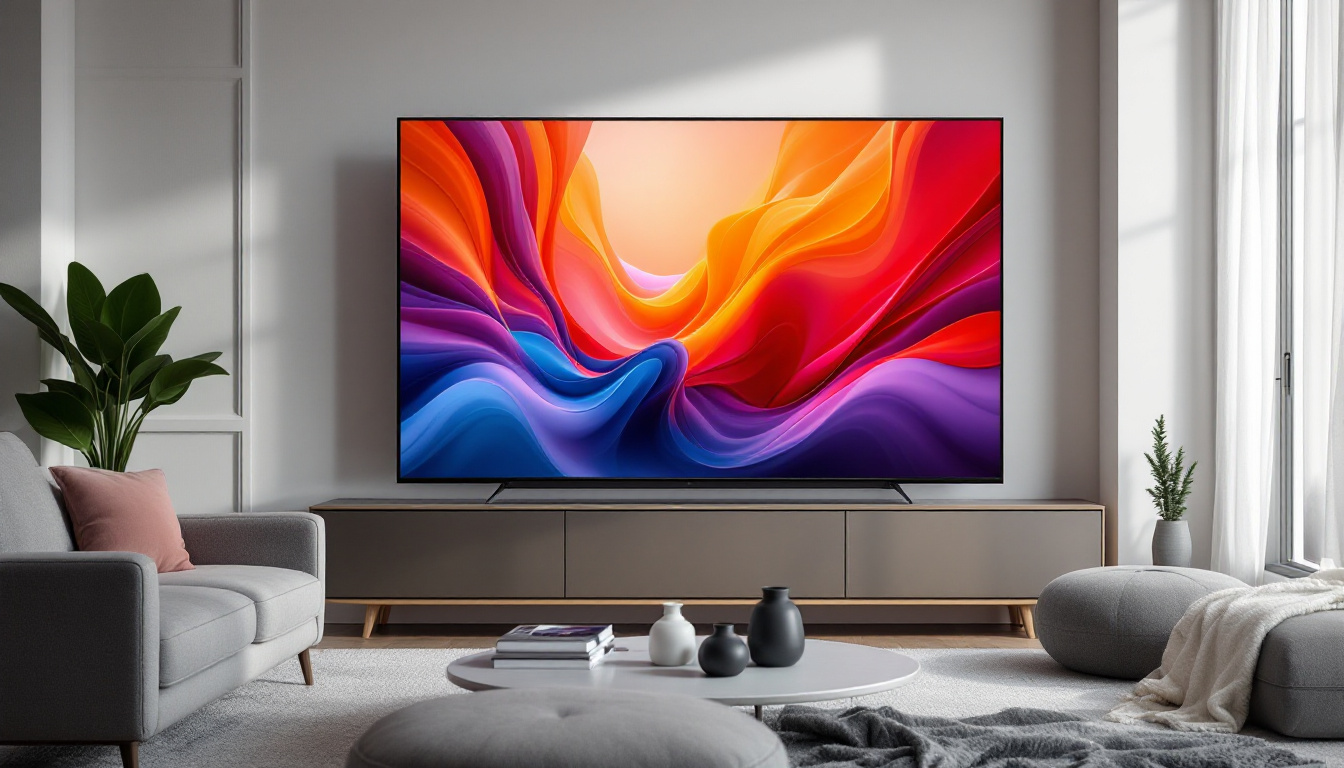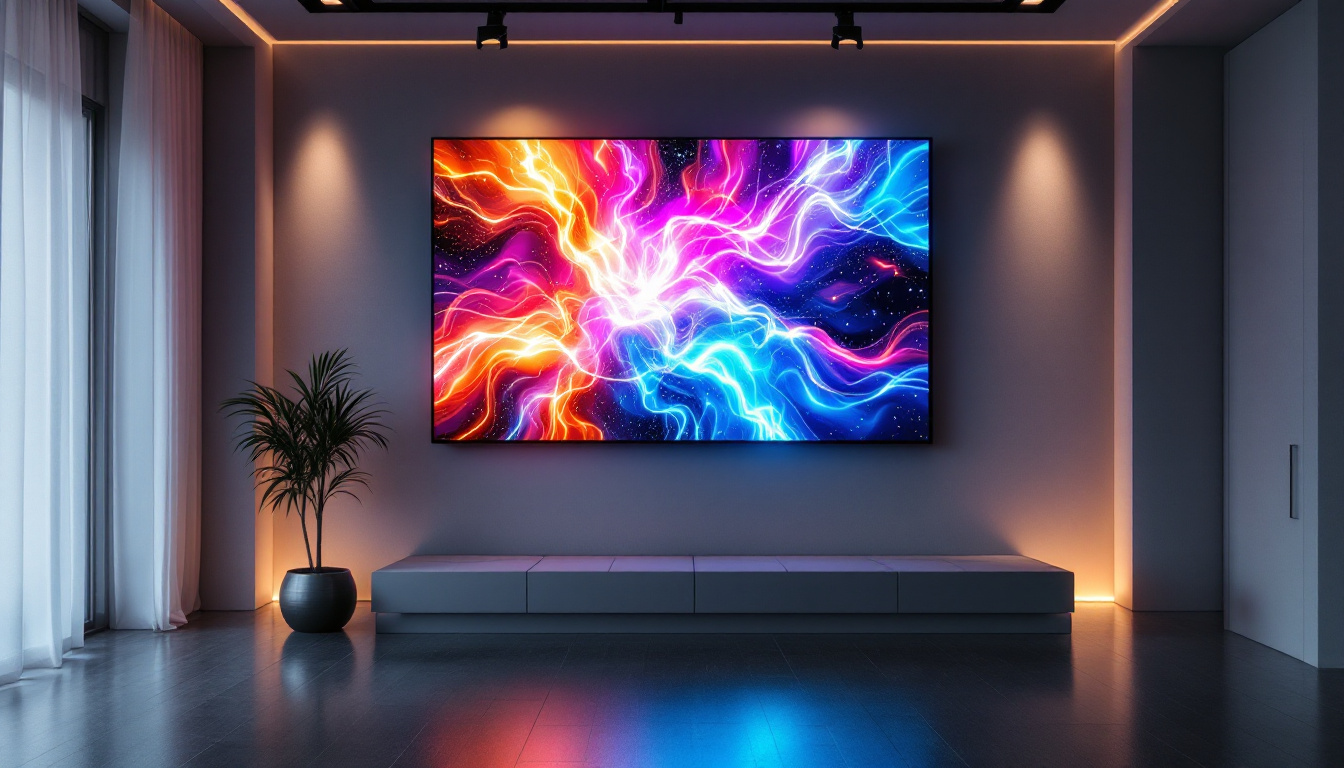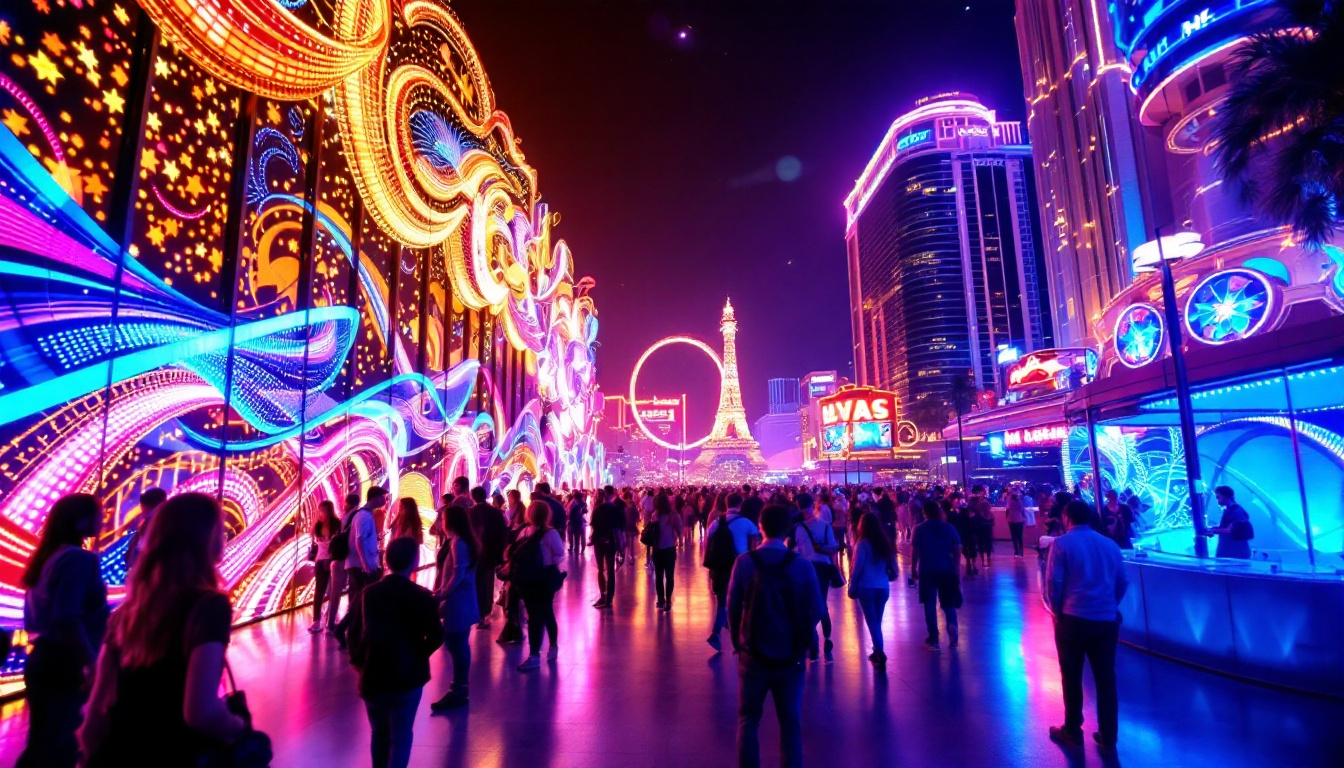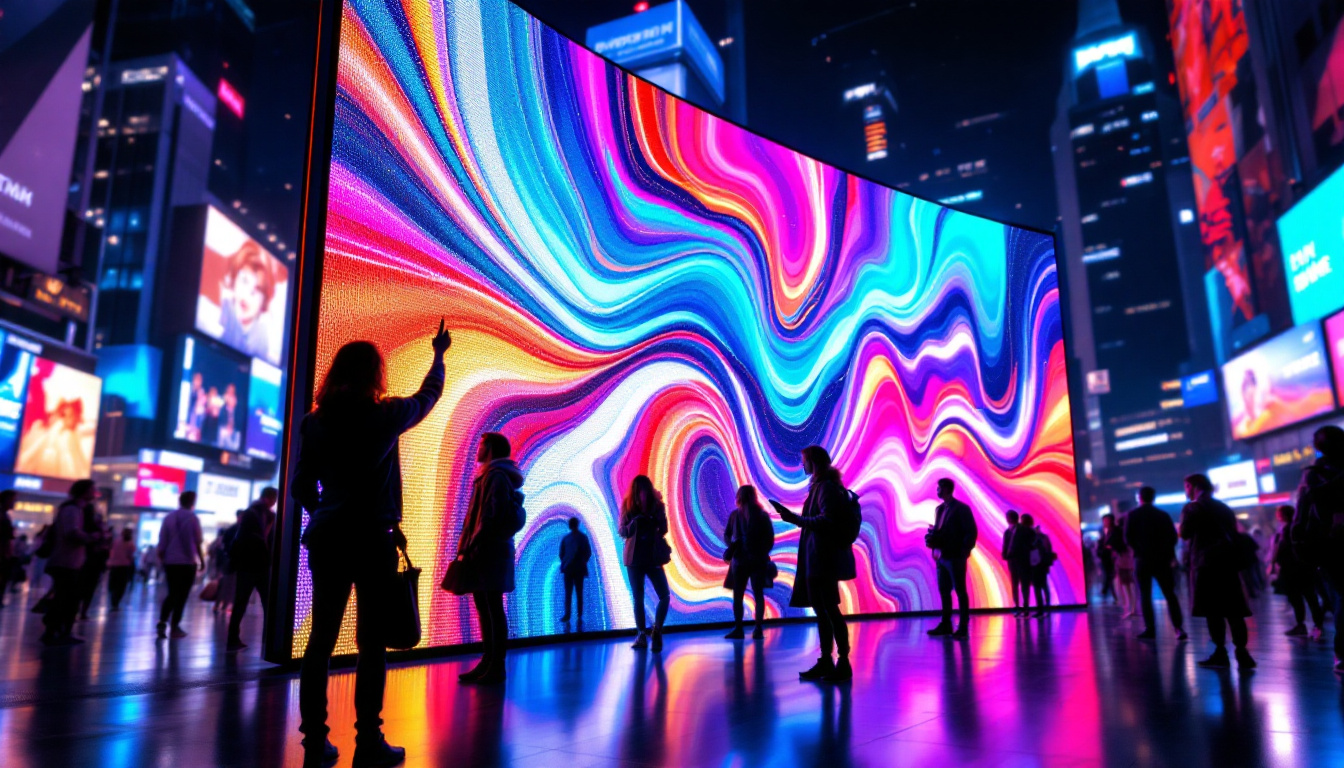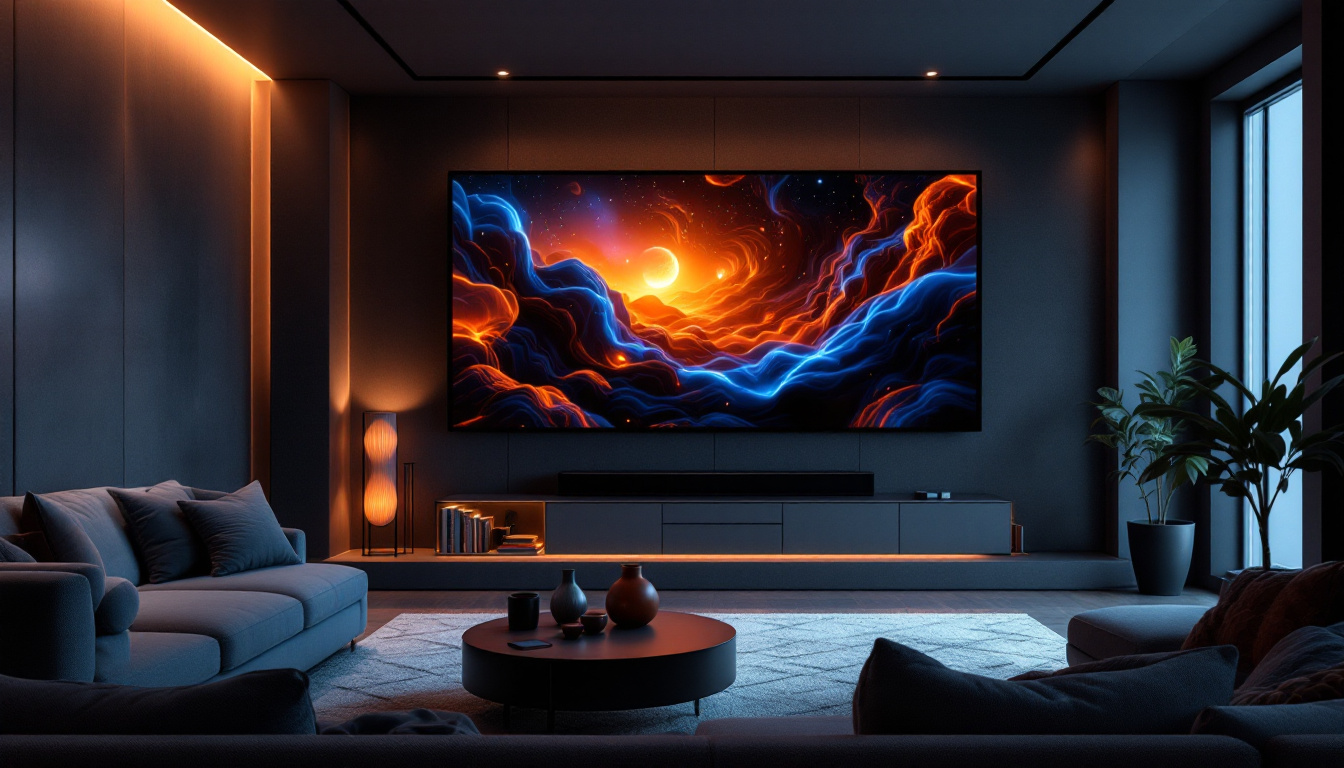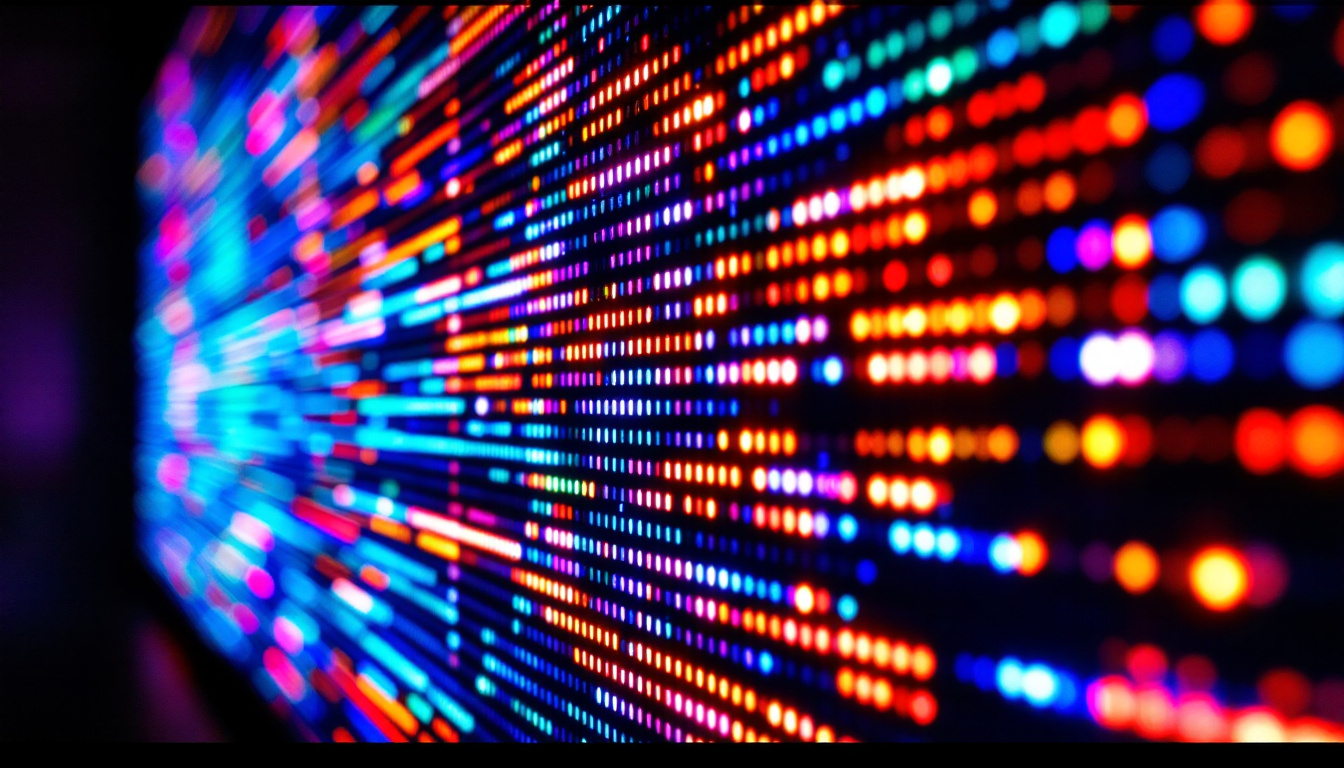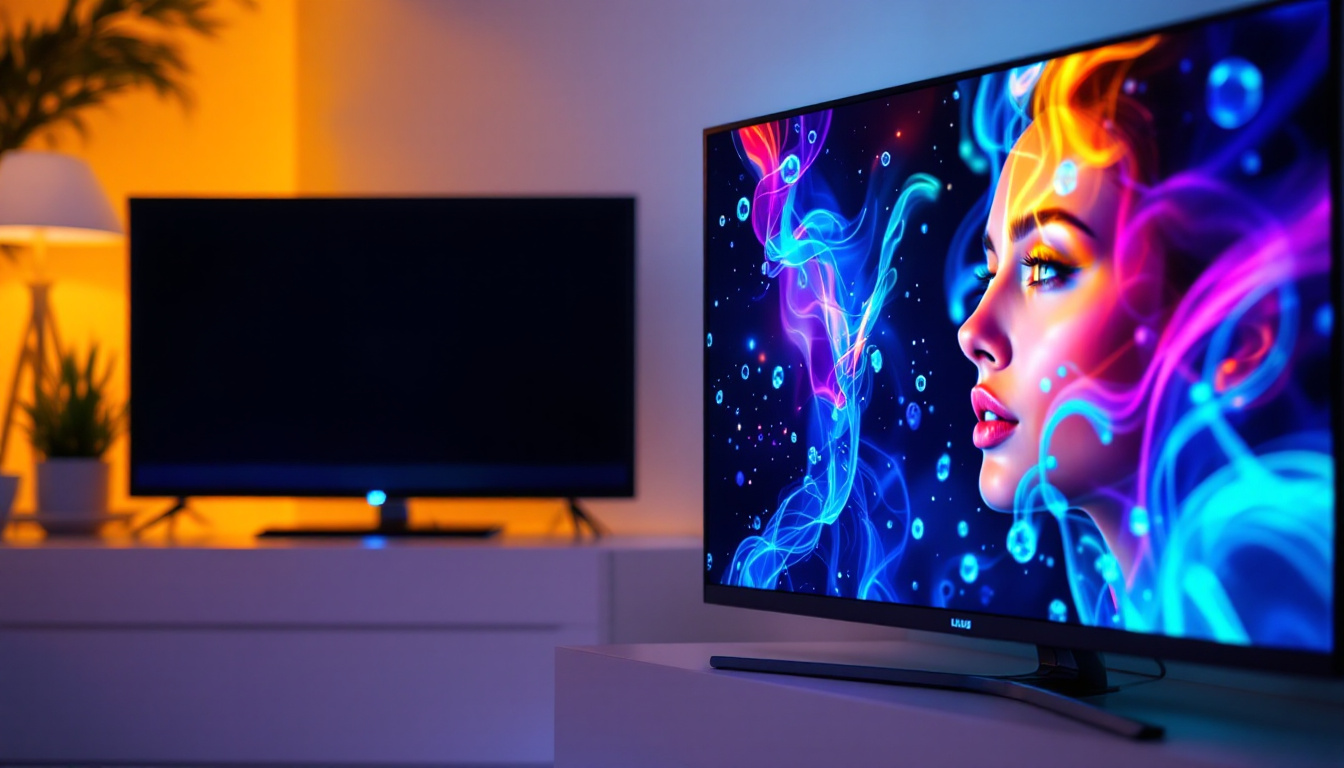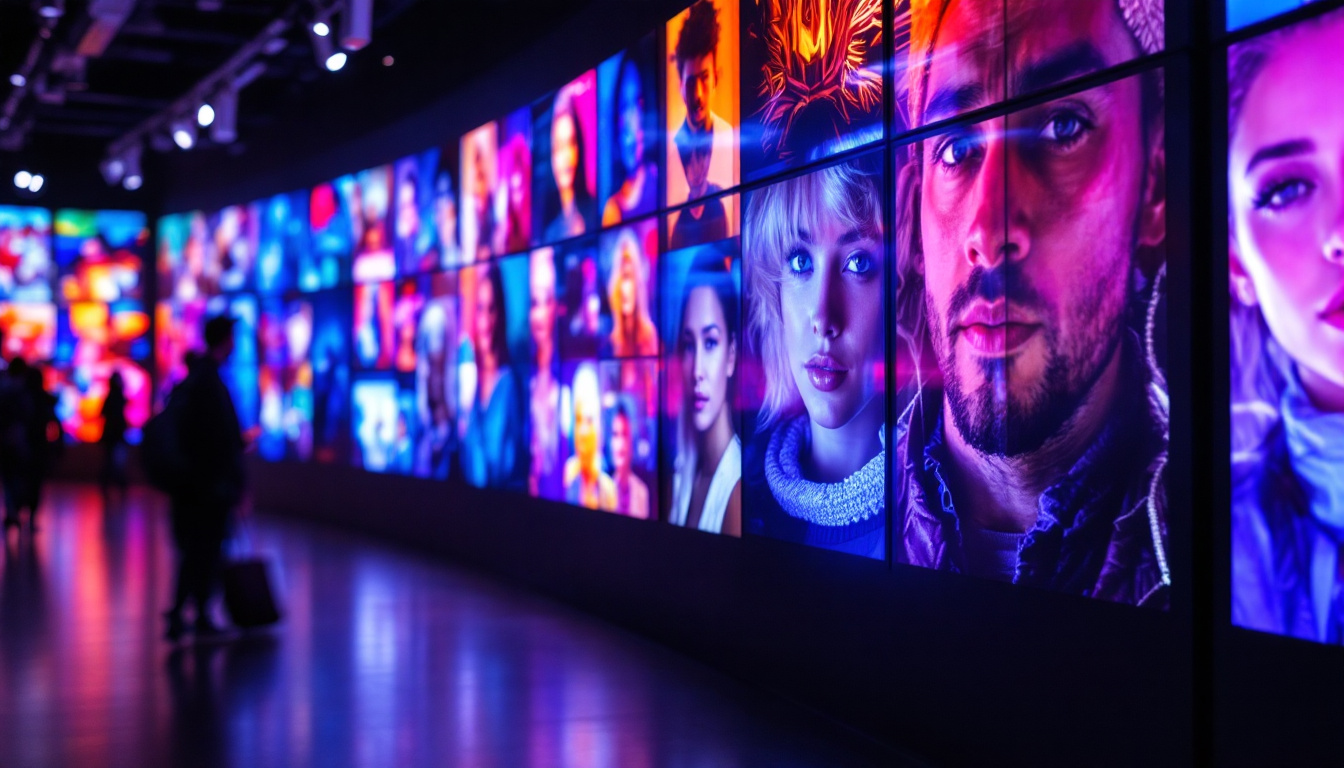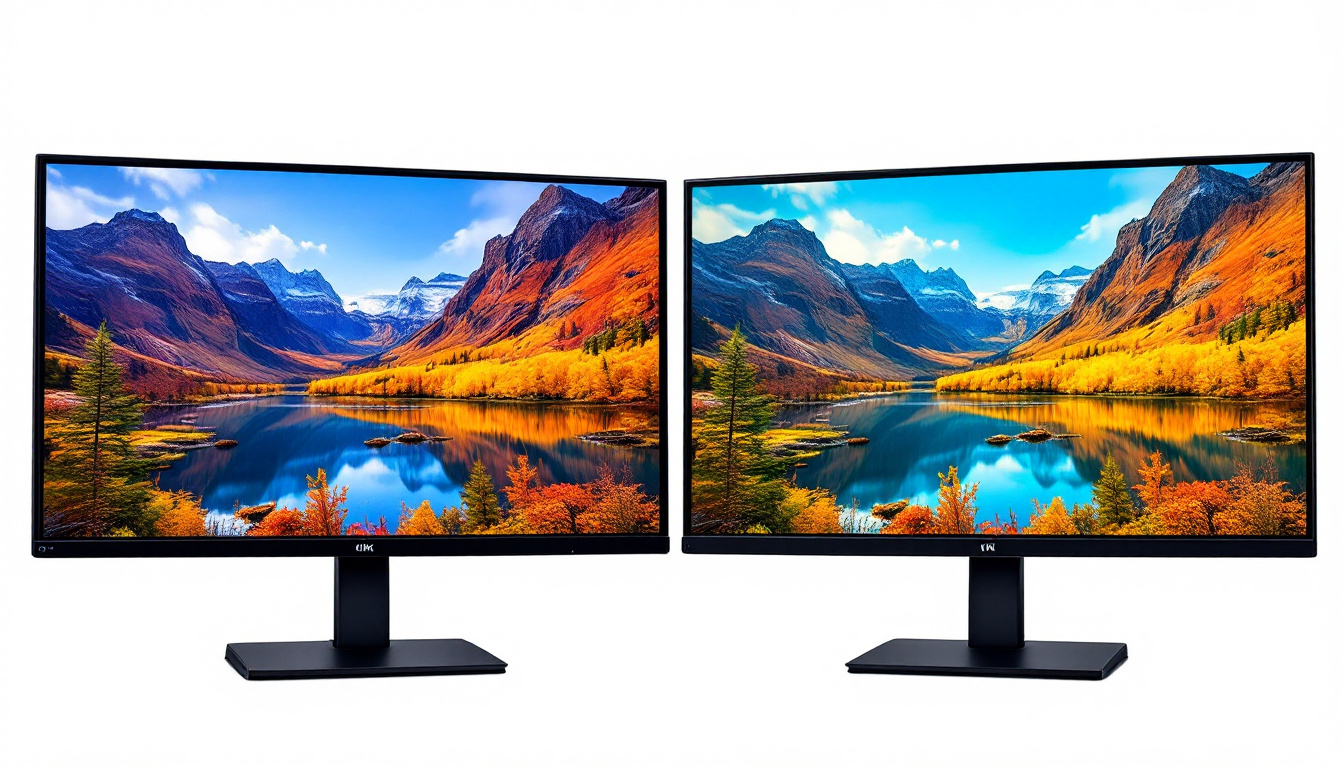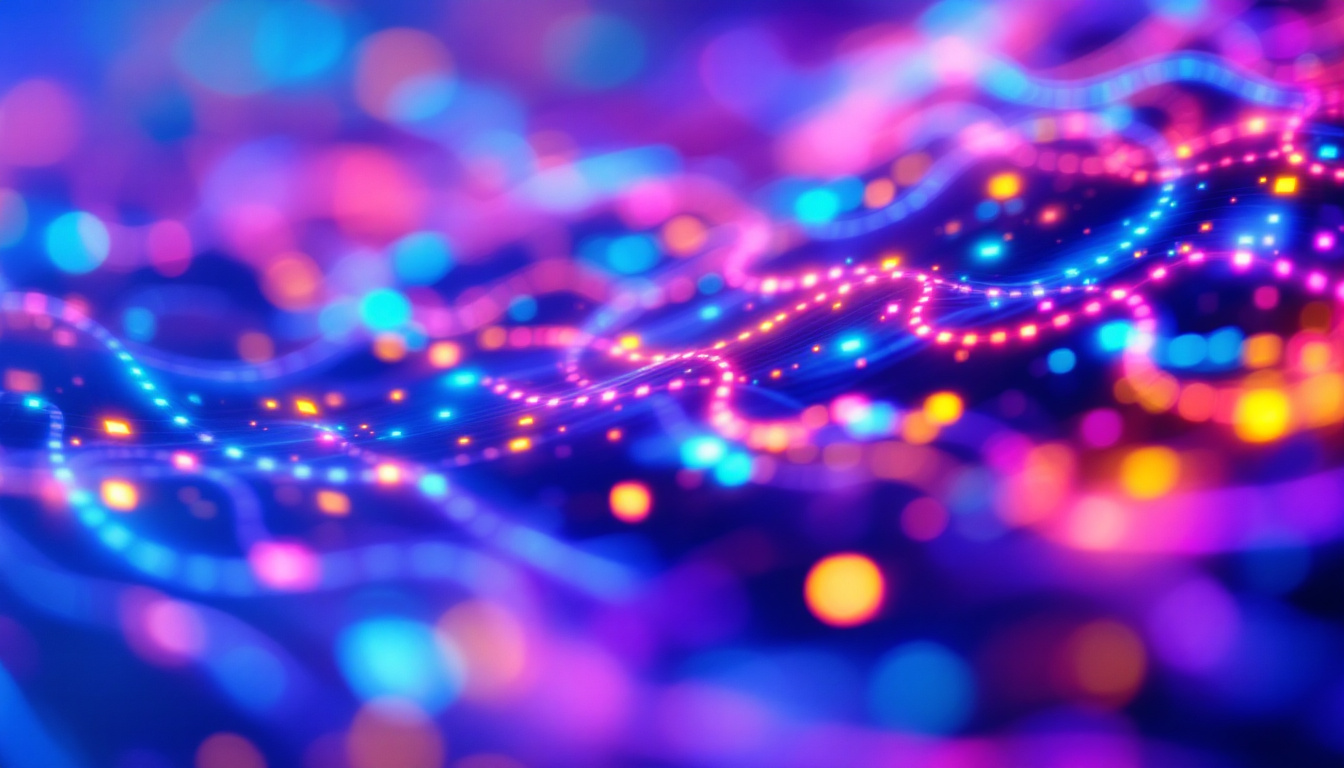In today’s digital age, the ability to project images on walls has become an essential tool for presentations, art displays, and even home entertainment. With advancements in technology, LED displays have emerged as a popular choice for projecting high-quality images. This article will explore the various methods and technologies used to project images on walls, focusing particularly on LED displays.
Understanding LED Displays
LED displays are a type of flat panel display that uses light-emitting diodes (LEDs) to produce images. They are known for their brightness, energy efficiency, and versatility, making them suitable for a wide range of applications, from advertising to home theaters.
Types of LED Displays
There are several types of LED displays, each with its unique characteristics and uses. The most common types include:
- Direct View LED: These displays are made up of individual LED modules that can be combined to form larger screens. They are often used in outdoor advertising and large venues due to their high brightness and visibility.
- LED Backlit LCD: These displays use LEDs to illuminate an LCD panel. They offer better color accuracy and contrast compared to traditional LCDs and are commonly found in televisions and computer monitors.
- MicroLED: A newer technology, MicroLED displays consist of tiny individual LEDs that can create vibrant colors and deep blacks. They are still emerging in the market but hold great potential for the future of display technology.
How LED Displays Work
LED displays work by illuminating pixels made up of red, green, and blue (RGB) diodes. By adjusting the intensity of each color, a wide spectrum of colors can be produced. The combination of these colors allows for the creation of detailed and vibrant images. The technology behind LED displays enables them to produce high brightness levels, making them suitable for both indoor and outdoor use.
In addition to their impressive brightness, LED displays also boast remarkable response times, which is particularly beneficial for fast-moving content such as sports broadcasts or video games. This rapid response minimizes motion blur, resulting in a smoother viewing experience. Furthermore, the durability of LED technology contributes to its popularity; LED displays are less prone to damage compared to traditional glass screens, making them ideal for high-traffic areas or environments where they may be subjected to physical stress.
Another significant advantage of LED displays is their energy efficiency. Compared to older display technologies, LEDs consume less power, which not only reduces electricity costs but also has a positive impact on the environment. Many manufacturers are now focusing on developing sustainable practices in the production of LED displays, including the use of recyclable materials and energy-efficient manufacturing processes. As technology continues to evolve, we can expect to see even more innovations that enhance the performance and sustainability of LED displays.
Projecting Images with LED Displays
Projecting images on a wall using LED displays can be done in various ways, depending on the desired outcome and the environment. Understanding the different methods can help in selecting the right approach for a specific need.
Using LED Projectors
LED projectors are a popular choice for projecting images onto walls. They utilize LED light sources to project images from a computer, DVD player, or other media devices. LED projectors are compact, portable, and energy-efficient, making them ideal for home theaters, classrooms, and business presentations.
When choosing an LED projector, consider factors such as brightness (measured in lumens), resolution, and connectivity options. A higher lumen rating is essential for projecting images in well-lit environments, while a higher resolution ensures clearer and more detailed images.
Setting Up an LED Display for Wall Projection
To set up an LED display for projecting images on a wall, follow these steps:
- Select the Right Display: Choose an LED display that meets your size and resolution requirements.
- Determine the Projection Distance: Measure the distance from the display to the wall to ensure the image fits properly.
- Adjust the Angle: Tilt or rotate the display to achieve the desired angle for optimal viewing.
- Connect Your Source: Use HDMI, VGA, or other compatible cables to connect your media source to the display.
- Calibrate the Image: Adjust settings such as brightness, contrast, and color balance to enhance the image quality.
Creating an Immersive Experience
For those looking to create an immersive experience, consider using multiple LED displays to form a larger image or video wall. This approach can enhance the visual impact and create a more engaging atmosphere for events, exhibitions, or home entertainment.
When designing a video wall, pay attention to the spacing between displays, the resolution of each panel, and the content being displayed. A seamless transition between screens is crucial for maintaining visual continuity.
Advantages of Using LED Displays
LED displays offer numerous advantages over traditional projection methods, making them a preferred choice for many applications. Here are some of the key benefits:
High Brightness and Clarity
One of the standout features of LED displays is their ability to produce high brightness levels. This makes them suitable for use in various lighting conditions, including bright environments where traditional projectors might struggle. The clarity and sharpness of images displayed on LED screens are also superior, providing a more enjoyable viewing experience.
Energy Efficiency
LED technology is inherently more energy-efficient than traditional incandescent or fluorescent lighting. This not only reduces electricity costs but also contributes to a lower carbon footprint. As a result, businesses and individuals can enjoy significant savings while being environmentally conscious.
Longevity and Durability
LED displays are known for their longevity, often lasting tens of thousands of hours before needing replacement. This durability makes them a wise investment for both commercial and residential applications. Additionally, LED displays are less susceptible to damage from impacts or vibrations, making them ideal for dynamic environments.
Considerations When Using LED Displays
While LED displays offer many benefits, there are also considerations to keep in mind when using them for image projection. Understanding these factors can help ensure optimal performance and longevity.
Cost
LED displays can be more expensive upfront compared to traditional projection systems. However, the long-term savings on maintenance and energy costs can offset this initial investment. It’s essential to evaluate the total cost of ownership when considering an LED display for your needs.
Installation and Setup
Proper installation is crucial for achieving the best results with LED displays. Depending on the size and type of display, professional installation may be required to ensure that the display is securely mounted and correctly calibrated. Additionally, consider the layout of the space to optimize viewing angles and minimize glare.
Content Management
Managing content for LED displays can be more complex than traditional projectors. Depending on the system used, content may need to be formatted specifically for the display, and software may be required to control playback. It’s important to have a content management strategy in place to ensure that the right images and videos are displayed at the right times.
Applications of LED Displays
LED displays are versatile and can be used in a wide range of applications. Their adaptability makes them suitable for various industries and environments.
Advertising and Marketing
One of the most common uses of LED displays is in advertising and marketing. Businesses utilize LED screens to display dynamic advertisements, promotions, and brand messages. The high visibility and eye-catching nature of LED displays make them effective tools for attracting customers and enhancing brand recognition.
Entertainment and Events
In the entertainment industry, LED displays are used for concerts, festivals, and live events. They can create stunning visual effects and immersive experiences for audiences. Additionally, LED screens are commonly used in theaters and cinemas to enhance the viewing experience.
Education and Training
Educational institutions are increasingly adopting LED displays for classrooms and training environments. These displays can be used to present multimedia content, engage students, and facilitate interactive learning experiences. The clarity and brightness of LED screens make them ideal for educational settings.
Future Trends in LED Display Technology
The LED display industry is constantly evolving, with new technologies and innovations emerging regularly. Keeping an eye on these trends can provide insights into the future of image projection.
Advancements in MicroLED Technology
MicroLED technology is poised to revolutionize the display industry. With the ability to produce higher resolutions and better color accuracy, MicroLED displays are expected to become more prevalent in both commercial and consumer markets. This technology offers the potential for thinner, lighter displays with even greater energy efficiency.
Integration with Smart Technologies
As smart home technologies continue to gain popularity, the integration of LED displays with smart systems is becoming more common. This allows for seamless control of displays through voice commands or mobile applications, enhancing user convenience and interactivity.
Environmental Sustainability
With growing awareness of environmental issues, the LED display industry is focusing on sustainability. Manufacturers are exploring eco-friendly materials and production processes to reduce the environmental impact of displays. This trend is likely to continue as consumers demand more sustainable products.
Conclusion
Projecting images on a wall using LED displays offers a dynamic and engaging way to share information, entertain, and create immersive experiences. With their high brightness, energy efficiency, and versatility, LED displays are becoming increasingly popular across various industries.
As technology continues to advance, the potential applications and capabilities of LED displays will only expand, making them an essential tool for the future. Whether for advertising, entertainment, or education, understanding how to effectively use LED displays can enhance any project or event.
In summary, the journey of projecting images on a wall through LED displays is both exciting and full of possibilities. By staying informed about the latest trends and technologies, individuals and businesses can make the most of these powerful tools.
Discover LumenMatrix LED Display Solutions
Ready to elevate your visual presentations to the next level? LumenMatrix is at the forefront of LED display technology, offering a wide array of innovative solutions that bring your images to life with unparalleled brightness and clarity. From captivating Indoor and Outdoor LED Wall Displays to dynamic Vehicle and Sports LED Displays, our products are designed to make a lasting impression. Explore our LED Poster Displays, Floor LED Displays, Custom LED Displays, All-in-One LED Displays, and LED Transparent Displays to create immersive experiences that resonate with your audience. Embrace the future of visual communication with LumenMatrix and check out our LED Display Solutions today.

